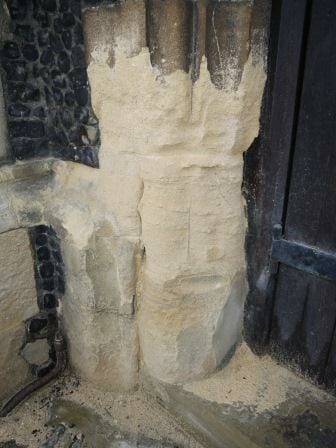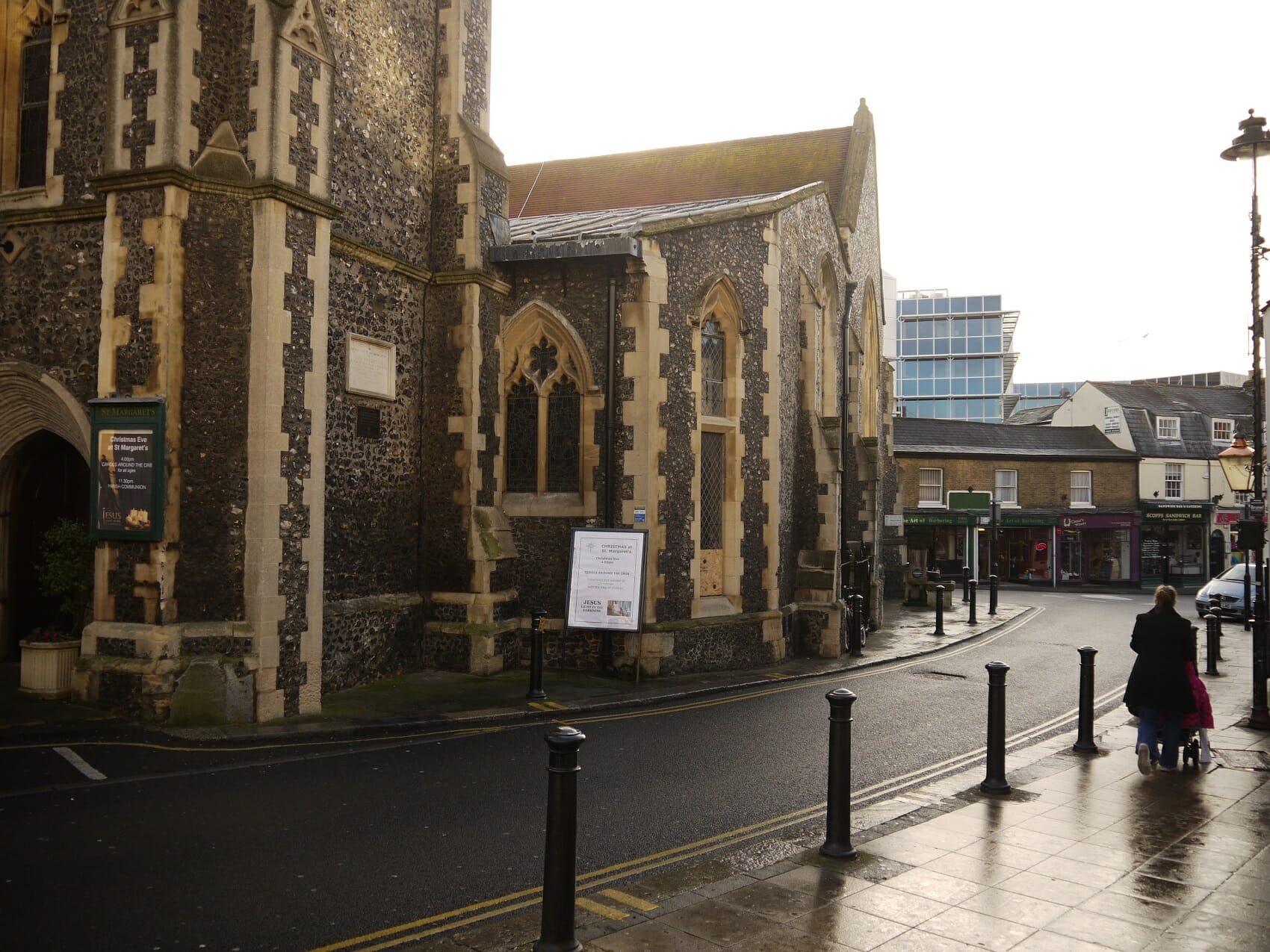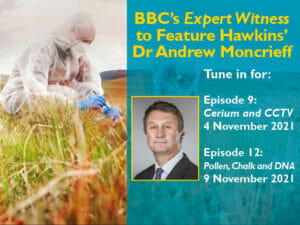St Margaret’s Church in Uxbridge is suffering from decay of the stone walls some of which is serious. The church authorities were advised by their conservation experts that the cause of the decay was attack by salt overspill from the council’s winter road gritting program and as a result, the church brought proceedings against the council. The case had clear implications for all local authorities, given their statutory duty to keep the roads safe during winter.
Weightmans solicitors instructed Hawkins’ Civil and Structural Engineering Group on behalf of the council’s insurers and Dr Andrew Moncrieff reviewed the case put forward by the Claimant and began his own research into the cause of the deterioration.
The church is built of limestone which is not vulnerable to chemical attack by salt, but could in theory be attacked by the growth of salt crystals in the pore spaces of the rock and the resultant mechanical forces.
The Claimant’s Expert relied on bulk tests which showed that there was salt (the mineral halite) associated with the stone and a considerable weight of published literature which they said demonstrated that the effect was well documented.

Dr Moncrieff pointed out that the bulk tests did not demonstrate where the halite crystals were situated in the stone and on reviewing the literature established that the only areas in which such mechanical damage by salt was actually documented were in hot arid regions. Such damage was mentioned as a possibility in connection with temperate areas but had never been shown to have occurred. Hawkins carried out their own more specific analysis and used advanced, automated electron microscopy to examine where the mineral halite was forming in the stone. The work established that small quantities of halite had formed in the pores of the stone but that the quantities were nowhere near large enough to have caused the damage seen at St Margaret’s. In addition, Dr Moncrieff established that there was no particular correlation between proximity to the road and damage to the church and that there were numerous areas of the church which had been repaired in the relatively distant past, long before the council began gritting in the area. The notion of road salt damaging buildings seemed to be based on apocryphal, unsubstantiated ideas in the world of conservation.
Dr Moncrieff concluded that the damage to the church was caused by normal deterioration of limestone as a result of attack by acid pollution and freeze-thaw action. The marked variability in the severity of the damage was caused by the heterogeneity (variation) in the quality and strength of the stone.
At arbitration, the Respondent’s case was put by Mr Daniel Tobin of Counsel, with evidence being given by both Expert Witnesses. The Arbitrator found that “Dr Moncrieff’s method of analysis is more accurate and probative of what is actually happening in the stonework”, and concluded that “On balance I prefer Dr Moncrieff’s evidence as to the probable cause of deterioration to St Margaret’s Church. I find that over a period of around one hundred and forty years the probable primary cause is normal weathering and climatic conditions, including the effects of freeze thaw, in an urban environment; with fine detail controlled by variations in the mechanical strength and composition of the stone”.
ABOUT THE AUTHOR
Andrew has been working at Hawkins since 1992 where he trained in the investigation of fires and explosions. Andrew introduced Hawkins to forensic geology and carries out small, but significant numbers of investigations relating to geology. Andrew has conducted numerous geological investigations into serious crimes. On one case, he used soil and rock evidence to show that Ian Huntley had driven his car on the remote track where the bodies of Holly Wells and Jessica Chapman were found.







